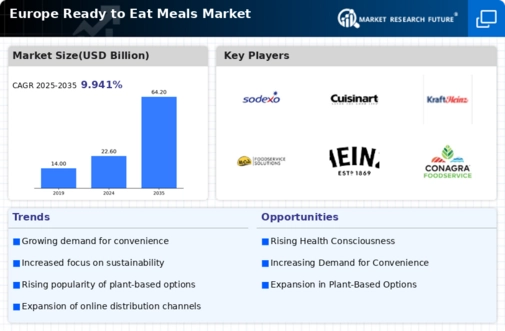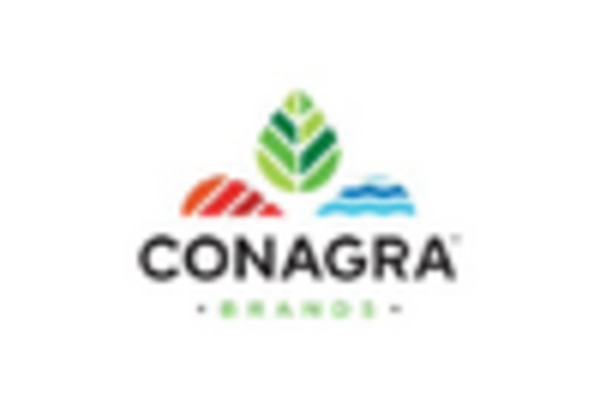Germany : Strong demand drives growth
Key markets include major cities like Berlin, Munich, and Hamburg, where consumer demand is particularly high. The competitive landscape features significant players such as Nestle and Unilever, which have established strong brand loyalty. Local market dynamics are influenced by a growing trend towards organic and locally sourced ingredients. The food service industry, including restaurants and catering, is also a vital sector for ready meals, enhancing overall market growth.
UK : Health-conscious consumers lead demand
Key markets include London, Manchester, and Birmingham, where urban lifestyles fuel demand. The competitive landscape is marked by strong players like Unilever and Kraft Heinz, which dominate the market. Local dynamics are characterized by a focus on sustainability and ethical sourcing, influencing consumer choices. The food delivery sector is also expanding, providing additional channels for ready meal distribution.
France : Tradition meets modern convenience
Key markets include Paris, Lyon, and Marseille, where culinary diversity enhances demand. The competitive landscape features major players like Nestle and Conagra Brands, which offer a range of products catering to French tastes. Local market dynamics emphasize quality and authenticity, with consumers willing to pay a premium for gourmet ready meals. The catering industry also plays a significant role in driving market growth.
Russia : Growing urbanization fuels demand
Key markets include Moscow and St. Petersburg, where demand for ready meals is on the rise. The competitive landscape features both local and international players, including PepsiCo and General Mills, which are expanding their product offerings. Local market dynamics are influenced by economic factors and consumer preferences for affordable yet quality meals. The retail sector, particularly supermarkets, is crucial for the distribution of ready meals.
Italy : Heritage meets convenience
Key markets include Rome, Milan, and Naples, where culinary traditions influence consumer choices. The competitive landscape features major players like Nestle and Bakkavor, which offer a variety of Italian-inspired ready meals. Local market dynamics emphasize quality and authenticity, with consumers willing to invest in premium products. The restaurant sector also contributes significantly to the ready meals market, enhancing overall growth.
Spain : Convenience shapes consumer choices
Key markets include Madrid and Barcelona, where urban lifestyles drive demand. The competitive landscape features players like Unilever and Kraft Heinz, which are expanding their presence in the market. Local dynamics are characterized by a focus on quality and flavor, with consumers seeking authentic Mediterranean options. The retail sector, particularly supermarkets, plays a crucial role in the distribution of ready meals.
Rest of Europe : Diverse preferences across regions
Key markets include smaller cities and rural areas where local producers are gaining traction. The competitive landscape is fragmented, with various local players offering unique products. Local market dynamics emphasize sustainability and quality, with consumers increasingly interested in artisanal ready meals. The food service sector, including local restaurants, also contributes to the growth of ready meals in these regions.


















Leave a Comment